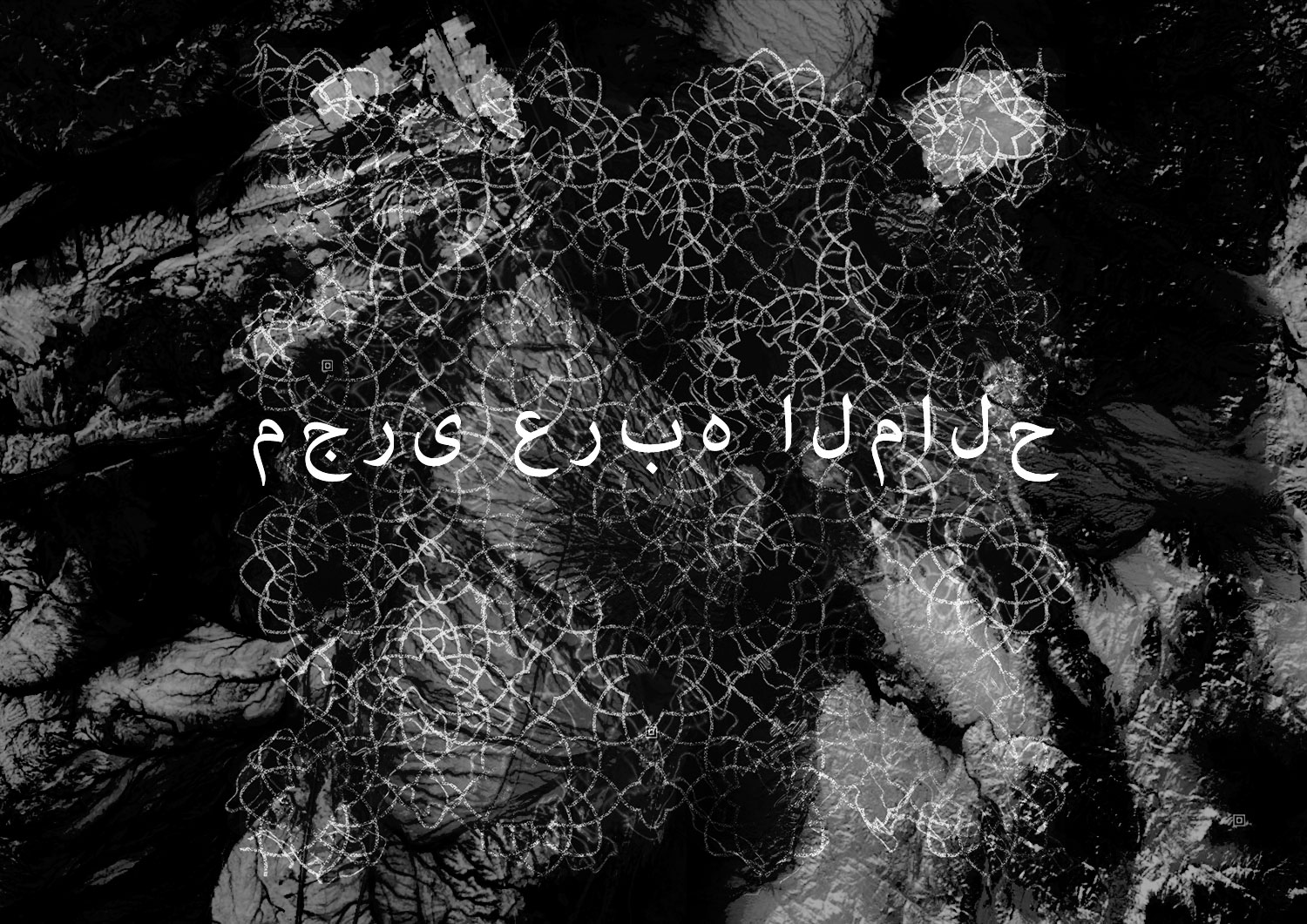Salty Steam of Araba
Marin Berović
mentor/-ica: doc. dr. Špela Hudnik, u.d.i.a.
demonstrator/-ka: Karin Rajh
Wādi Araba je 200 kilometrov dolga puščavska dolina. Definirana je kot geografski, geološki, krajinski in biotopski sistem, ki povezuje Mrtvo in Rdeče morje. Dolina je razdeljena na zahodni izraelski in vzhodni jordanski teritorij in je največja kontinuirana kopenska meja med dvema državama. Interesantna prostorska enota se po dekolonizaciji Osmanskega cesarstva na začetku prejšnjega stoletja začne deliti na dve strani.
Razvoj kibbutzimov na stani Negeva je rezultiral s kultivacijo puščavske krajine in premikanjem mej med državama. Na drugi strani doline v Jordaniji se naseljuje lokalno nomadsko prebivalstvo in translocirana populacija s teritorija Izraela. Pomemben prometni koridor ima na ta način svoje dualno življenje; sicer ni direktno konfliktna cona, ampak je definiran čez odnos dveh različnih sistemov.
O infrastrukturnem vodnem projektu ki bi povezoval dve morji se govori že od leta 1994, ko so Jordan in Izrael podpisali mirovni sporazum. Projekt bi preprečil sušenje Mrtvega morja in hkrati omogočil desalinizacijo morske v pitno vodo kar je ključnega pomena za celo regijo, posebej za Jordanijo in Palestino. Sistem, ki bi nastal v sodelovanju Palestine, Jordanije in Izraela ima tudi simbolični pomen kot skupni podvig, ki bi bil podlaga za boljše odnose v regiji.
#trajnostni urbanizem #voda in puščava #vadi #bioklimatske priložnosti

The odd thing regarding the Jordanian State Highway 65 is that it is a jagged road covered in sand that could just as easily be just a straight line connecting a the Red and The Dead Sea across the desert valley Araba.
Of course, more than 200km of completely straight road along the wadi of the same, repeating section on seemingly flat terrain would be an intense mental experience – hypnotic, mantric, meditating and intimidating. Handful of settlements and few built entities, some barely visible from the car, indicate that the travellers are not stuck in endless loop between port of Aqaba and the lowest depression in the world, saltworks of the Dead Sea.
Wadi Araba is in a geological sense a desert trench where African and Arabian tectonic plate convene. That axis was formalised – some 100 years ago while the French and the British were putting the geometric lines across the map the west and Negev were set for the State of Israel while everything east of the rift was appointed to Arab Bedouin tribes under the rule of Hashemite dynasty, direct descendants of the prophet Allah and the royal family of Kingdom of Jordan.
Arid landscape of the first cities, biblical myths and stories is a thick stack of cultural and agricultural, social, and ethnic layers bound, but not consolidated.
The major objective of the Red Sea Dead Sea project is to augment drinkable water supply of Jordan. Phase I of the Red Sea Dead Sea Project comprises abstracting 300 million cubic metres (MCM) per year from the Red Sea, desalinating a portion of this (65 MCM) and then conveying a mix of the waste brine and the remaining seawater balance (235 MCM) to the Dead Sea. Freshwater will be supplied to Aqaba and the southern part of Israel respectively. This project will also be used as a pilot to determine the impacts on the Red Sea and Dead Sea…
The net balance of the Dead Sea is currently estimated to be 700 MCM / yr (total evaporation minus total inflow), meaning that the proposed 1,150 MCM discharge would lead to stabilisation of the Dead Sea water level, and even a slow increase of the Dead Sea level towards the water levels around 70 years ago.
Environmental and Social Impact Assessment (Updated) – Main Report
Red Sea Dead Sea Water Conveyance Study 2017
The inaction has been compounded by Israel’s lack of a functioning government for nearly a year. The Red-Dead project is also expensive — it will cost Israel more than $1 billion. And bar the strategic interest of keeping the Hashemite Kingdom in power as a bulwark against Islamic extremists, not to mention restless Jordanian Palestinians, it is of no economic value to Israel, other than, perhaps, helping to slow the sea’s decline and in so doing harm tourism less. It mainly benefits drought-stricken Jordan, which is desperate for water.
Red-Dead also had immediate strategic importance for Israel, he [Clive Lipchin] continued, in that it would save Israeli farming communities of the Arava, which are running out of water. Israel’s national water carrier does not reach so far south. The brackish groundwater that farmers use is not renewable and the more they use, the saltier it gets.
Sinking Israel-Jordan relations leave Dead Sea, a natural wonder, low and dry
Sue Surkes, Times of Israel, November 2019
Red-Dead also had immediate strategic importance for Israel, he [Clive Lipchin] continued, in that it would save Israeli farming communities of the Arava, which are running out of water. Israel’s national water carrier does not reach so far south. The brackish groundwater that farmers use is not renewable and the more they use, the saltier it gets.
Sinking Israel-Jordan relations leave Dead Sea, a natural wonder, low and dry
Sue Surkes, Times of Israel, November 2019
Seven miles south of the Arava R&D Center is the community [kibbutz] of Ein Yahav, where Assaf Shaham began growing corals in 2008 after a career doing lighting design for architects and the stage. “Six years ago, I saw a lot of water is not used because it is too salty, and in 2010 there was an agreement that the removal of corals from the ocean was stopped,” Shaham says.
Arava tour reveals Israel’s pioneering work in desert agriculture
Sybil Kaplan, JNS.org, January 2014